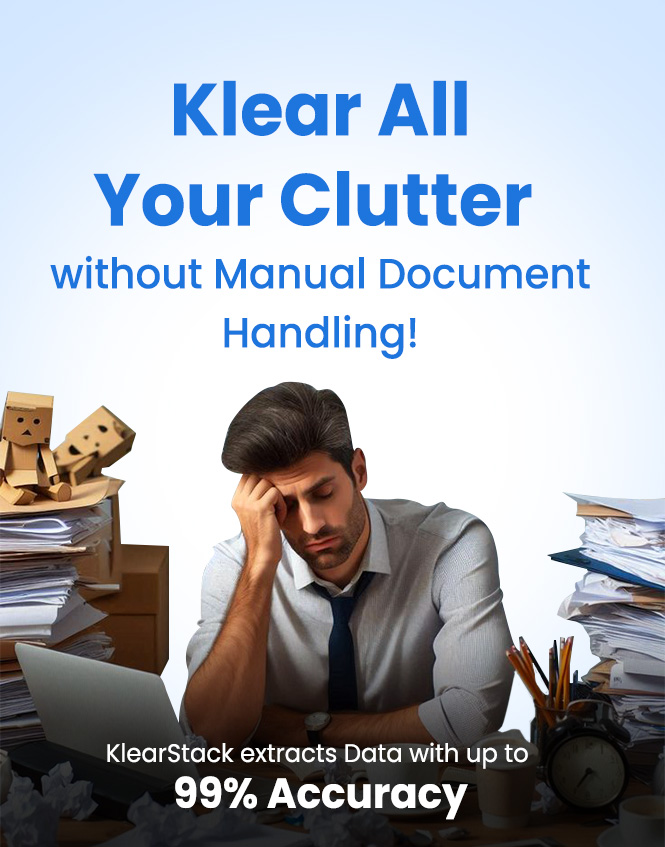[vc_row pix_particles_check=””][vc_column][vc_column_text]Enterprises today look for solutions that can streamline their business process to become more lean and agile in their everyday operations. Data recognition software helps enterprises to automate the way they enter data and store documents on their systems. By automating everyday paperwork and processing of documents, enterprises can focus more on their core activities and therefore, work towards growing their business. They do not need to focus anymore on everyday operational paperwork if they use data recognition software.
There are many types of data recognition software built with different types of technologies. Some software use logic and XY coordinates to extract data from documents whereas some solutions leverage artificial intelligence (AI) to contextual understand data from documents and then extract it accurately. The data recognition software that uses contextual AI, are designed to accurately extract data from template-free documents such as invoices, receipts, bill of lading and so on.[/vc_column_text][vc_column_text]
Technologies of Data Recognition Software
Data recognition software has many different features and technologies that come into to play to extract data accurately. Some of the technologies used by top-rated data recognition software are explained below in detail.[/vc_column_text][vc_column_text]Data recognition software has many different features and technologies that come into to play to extract data accurately. Some of the technologies used by top-rated data recognition software are explained below in detail.[/vc_column_text][vc_column_text]
OCR
[/vc_column_text][vc_column_text]Optical Character Recognition (OCR) extracts text on its face value from a document. OCR recognises each character on the document individually and extracts the character as it is and stores it in the system. OCR is one of the most basic technologies for data recognition software. By extracting the data at face value, it can identify all the types of written text and enter into the system with high accuracy.[/vc_column_text][vc_column_text]
NLP
[/vc_column_text][vc_column_text]Natural Language Processing is a branch of AI that helps to extract data from a document as if a human would do it. NLP tries to understand from the human perspective and then extract data from it rather than understanding the text or characters on the face value itself. NLP has the ability to transform the data as well as per the rules fed to the system by the enterprise so that the data can be standardized.
Say for example there are column headers with “Price” and “Unit Price” on two different invoices and the enterprise wants to standardize it to “Amount”. NLP will standardize the text to “Amount” by understanding that Price and Unit Price means the exact same thing in this context.[/vc_column_text][vc_column_text]
Computer Vision
[/vc_column_text][vc_column_text]Computer Vision is another branch of artificial intelligence that dissects images and interprets documents, piece by piece. Think of it like a jigsaw puzzle and then imagine a tool that scans over through every single piece of the jigsaw puzzle. Computer Vision does exactly that. By interpreting data piece by piece, the accuracy of data recognition increases and data is therefore accurately extracted. Dissecting the image makes it easy for computer vision technology to capture data.[/vc_column_text][vc_column_text]
Self-Learning Model
[/vc_column_text][vc_column_text]Machine learning models of certain data recognition software are designed in such a way that they automatically learn and improve as more and more documents are processed through the solution. With every new document, the solution will learn, adapt and store the manual inputs (if any) for future purposes for such types of documents.[/vc_column_text][vc_column_text]
Benefits of Having Data Recognition Software
Accurate Data Extraction:
Data recognition solutions can extract data accurately using the above mentioned technologies. By contextually understanding the data in the document, data recognition software can interpret data as a human would and extract data accordingly. It does not simply extract data at face value.
Saves Time & Cost:
By implementing data recognition software, your enterprise can save ample cost and time on manually entering the data into the system. Extra resources are required at times to input data and consume plenty of working hours as well. Data recognition software can eliminate these time and cost resources and help your enterprise to focus on its core activities.
Reduce Errors:
With data recognition software, your enterprise can reduce the error rates that can occur while manually entering the data. This means that payments to vendors and suppliers will be made with the right amount for the right items. Accurate data recognition can help to mitigate unwarranted costs.
End-to-End Document Processing:
Some data recognition software also have the ability to cross-check and reconcile one document with another. An invoice from one vendor can be cross-checked with its corresponding receipt or purchase order. This means that the manual reconciliation of documents is not required in such cases. This makes it easy for enterprises to cross-verify documents.[/vc_column_text][vc_column_text]
The KlearStack Edge
KlearStack AI is a data recognition software that does more than merely extract data. It can transform, validate and also automate document processes completely with the help of Straight-through Processing. KlearStack AI extracts data with contextual understanding and the machine learning models are designed to extract data from documents with the highest level of accuracy on day zero itself for unseen documents. This provides KlearStack with an edge over and above any other document intelligence solution. Book a demo to know more about KlearStack AI.[/vc_column_text][/vc_column][/vc_row]





